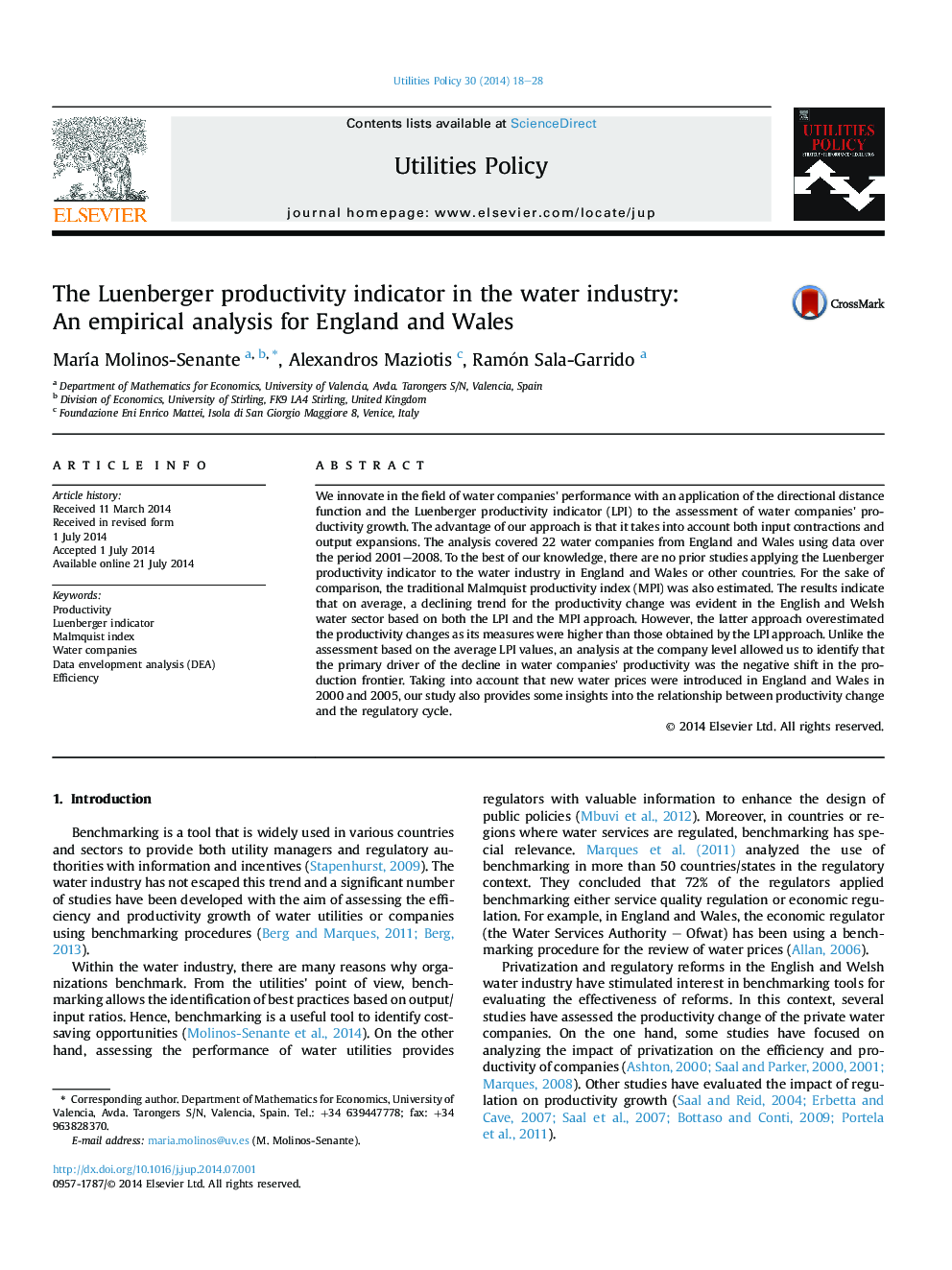| Article ID | Journal | Published Year | Pages | File Type |
|---|---|---|---|---|
| 999141 | Utilities Policy | 2014 | 11 Pages |
•Assessment of the productivity growth of English and Welsh water companies.•Comparison of the Malmquist productivity index with the Luenberger productivity indicator.•The main driver of the retardation productivity was the negative shift in the production frontier.•There were no significant differences between the WoCs'and the WaSCs' productivity change.
We innovate in the field of water companies' performance with an application of the directional distance function and the Luenberger productivity indicator (LPI) to the assessment of water companies' productivity growth. The advantage of our approach is that it takes into account both input contractions and output expansions. The analysis covered 22 water companies from England and Wales using data over the period 2001–2008. To the best of our knowledge, there are no prior studies applying the Luenberger productivity indicator to the water industry in England and Wales or other countries. For the sake of comparison, the traditional Malmquist productivity index (MPI) was also estimated. The results indicate that on average, a declining trend for the productivity change was evident in the English and Welsh water sector based on both the LPI and the MPI approach. However, the latter approach overestimated the productivity changes as its measures were higher than those obtained by the LPI approach. Unlike the assessment based on the average LPI values, an analysis at the company level allowed us to identify that the primary driver of the decline in water companies' productivity was the negative shift in the production frontier. Taking into account that new water prices were introduced in England and Wales in 2000 and 2005, our study also provides some insights into the relationship between productivity change and the regulatory cycle.
